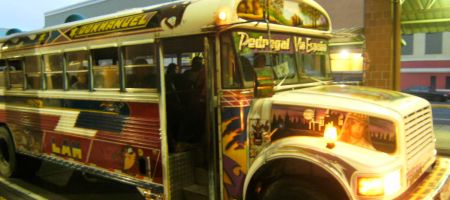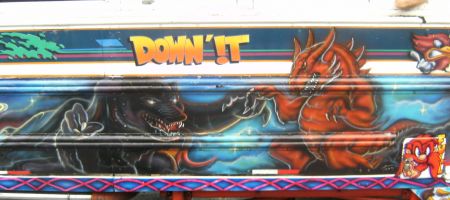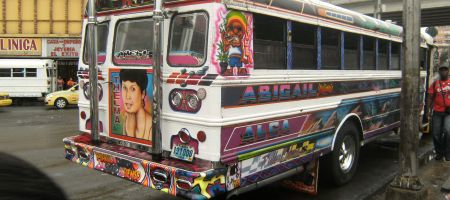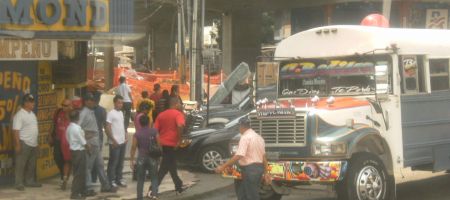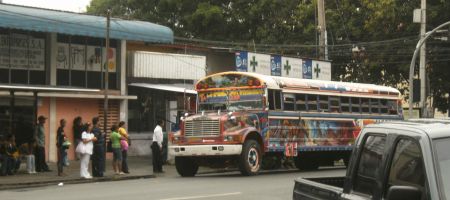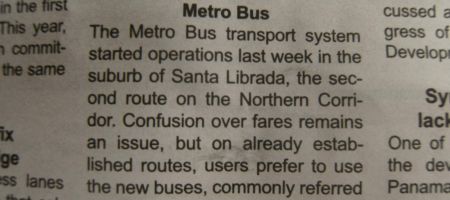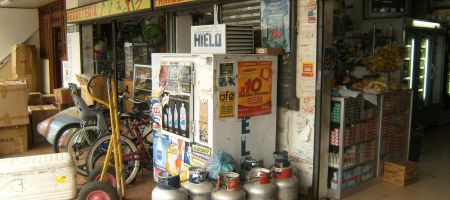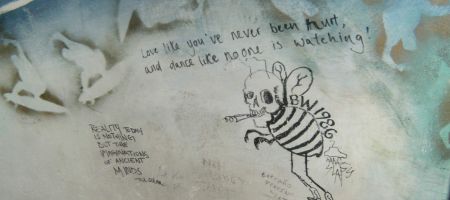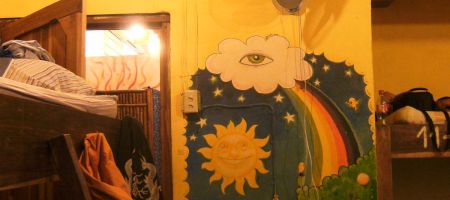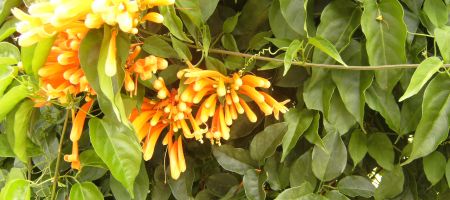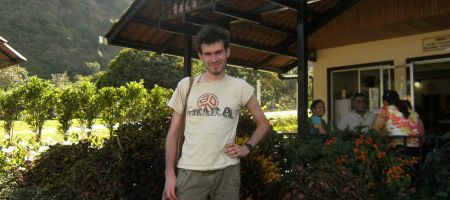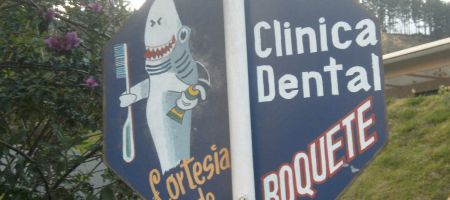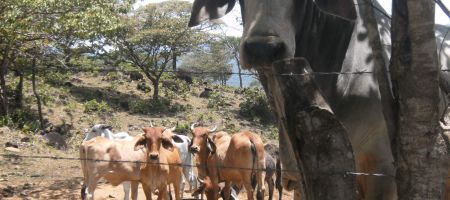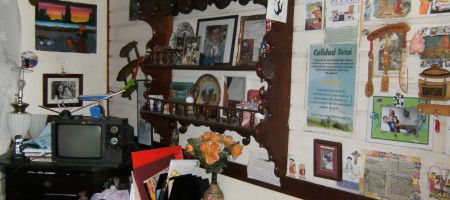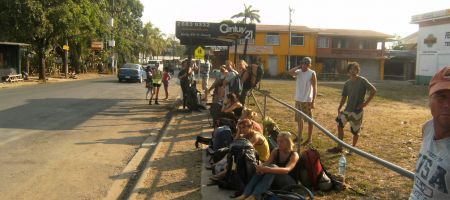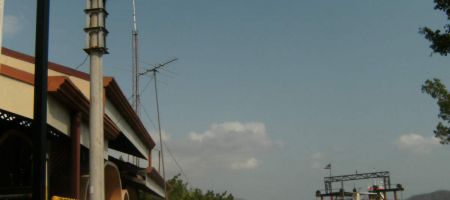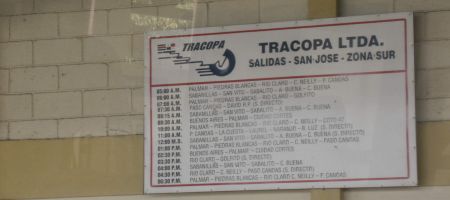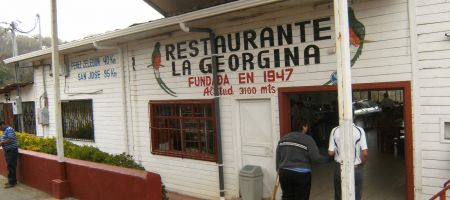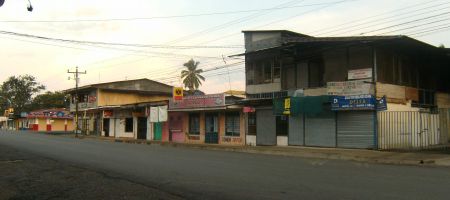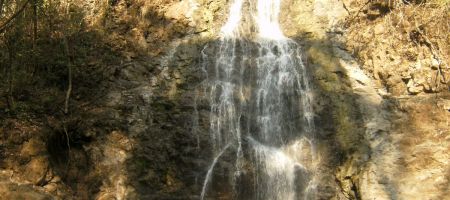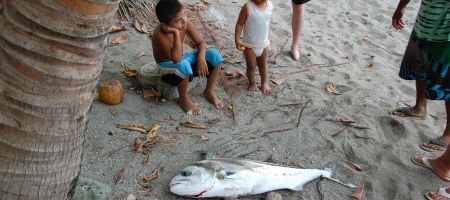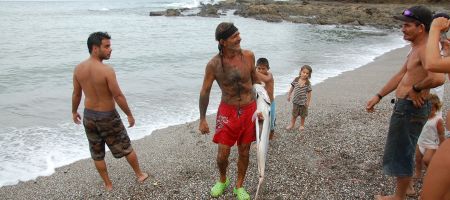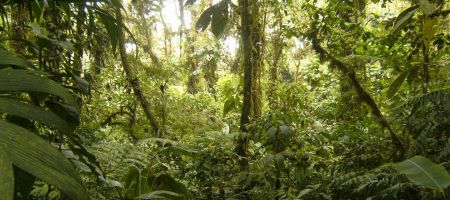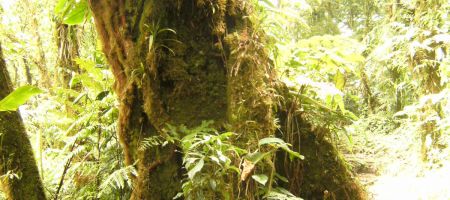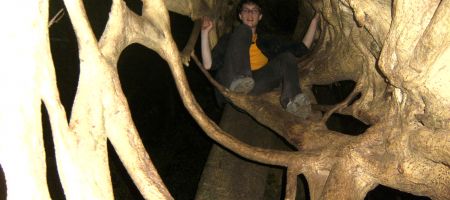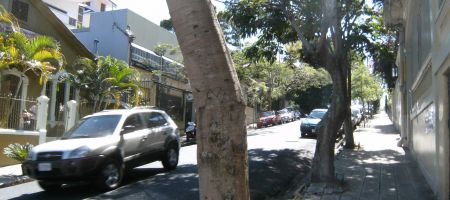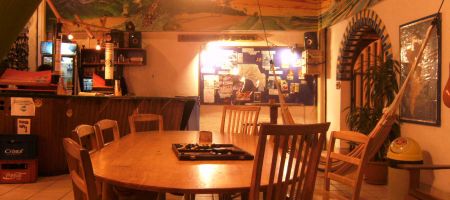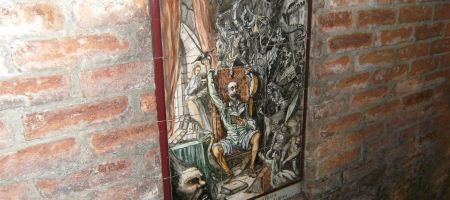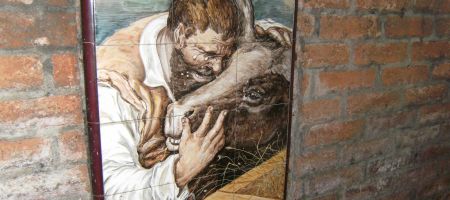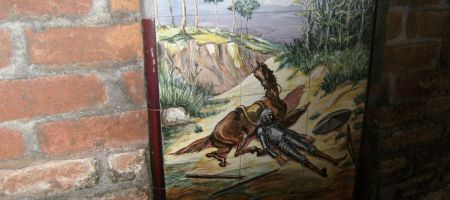Diablos Rojos
When I arrived at the bus terminal in Panama City, this was one of the first impressions.1
These former American schoolbusses serve as public transportation in Panama and as I found out when I travelled northwards, actually every country in central america except Costa Rica uses these kind of busses. In Panama City however, these busses are painted more colorfully then anywhere else in Panama.
Some busses are painted all over, with one great graffiti-style artwork after the other, pimped up with big speakers and powerful subwoofers inside the bus, additional blinkers, and flashing lights that the destination of the bus seems to be an almost negigible detail.
I asked some local about these busses and how they are organized. However, it was really hard to understand what he was saying. This was not because of any strong accent but because the bus driver put on some Reggaeton music at full volume. It is normal in busses here that the driver puts on some music though.
The bus in above photo is going to “Tumba Muerto”… if you look close enough, you can see it :-)
How much the busses are pimped (and how secure they are) pretty much depends on the owner of the bus. There is no central bus company like the HVV in Hamburg, instead there are a bunch of people who each own and run some busses; theoretically, if one owns a bus and has a public bus drivers license, he could just start his own route. Of course if he starts to charge anything else than the standard fare (25 cents within the city), he will jeopardize his license.
That the busses are privately run like taxis might be one reason why the bus drivers are often happy to stop for anyone who wants to get on or off the bus in the middle of the road :-)
The busses, though, are really really old which makes them a bit dangerous. One can see and one can hear that – some engines get so loud when the driver steps on the gas that the ground literally starts to shake. Locals call these busses “Diablos Rojos” (=Red devils), probably because of that. The one I talked with said that “they sometimes catch fire and burn out”. Hm.
He also told me that the Diablos Rojos will vanish from the streets of Panama City within one year and be replaced by the “Metro” busses. These busses look as modern as our busses with proper seats, are not painted, have no additional blinken lights, no sound system and the destination is displayed in big letters on a digital display on the front. They are completely white and feature overregulated air conditioners which is why the locals also lovingly call them “Frigorificos” (=Refrigerators). The complicated and more expensive fare system is inclusive. :-P
If you want to see some more pictures of the Diablos Rojos, there are plentiful.
1 Yes, you read right: Panama actually managed that its capital has ONE central bus terminal, as the only country in central america :-P

Mini super loco
After Bocas, I went to Panama City. Man, I love this city! I don’t know why exactly, perhaps because it has all the elements I loved about India while at the same time is so cosmopolitan and modern(!) at some places, that one can always take a breather of the chaotic streets and pedestrian zones of the city centre. In my next blog post I will also write about the one big thing I like the most about Panama City :-)
The following are the thoughts I had when I went through a particular(ly funny) supermarket near my hostel. Of course, like almost all mini-supermarkets, this supermarket was also run by Chinese (“Chinos”). These “mini super“s are typically quite narrow but deep, the cash point is at the front and the shelves go into the shop.
In the entrance of the supermarket, a woman and a man clamored loudly about politics(?). While still wondering whether they were drunk or just like that, I almost stumbled over some men who were playing some kind of card game with dominos(?) on the pavement right next to the supermarket entrance. Inside, I had to climb over some obstacles to actually get to the shelves cause there was just stuff lying around in the middle of the already narrow gangways :-) The goods themselves kinda just unmotivatedly lied around in the shelves like all that shit that piles up on your bedside table (or desktop) after some time. – What is being sold and what is just lying there? Hmm, I guess that carton of milk on the floor next to the fridge and that orange juice with the straw already inside the carton are not being sold. Probably there is some private area in that supermarket-fridge? And what is this further in the back of the shop? Is this underwear on a line? Is someone doing laundry in the supermarket? I also hear someone watching TV there. Ah true, I see some kind of living area there. So yeah, better not enter too deep into the supermarket, I don’t want to end up in someone’s living room. Just when I got my stuff and backed out of the shop, some dwarf came inside and also started shouting something repeatedly, I think about him being a dwarf, which made the situation …quite bizarre.
Almost next door, there was a modern McDonalds-like fast food restaurant.

El hermanito perdido
Juan Pablo is a Chilean artisan who now lived this kind of life – travelling, creating and selling handicraft (mainly jewelry), for 13 years. He has long wavy hair, wears this typical kind of simple clothing and is a very calm, open and curious person. I met him in Bocas del Toro and was really happy to have found someone amongst the travellers there with whom I could (and must) communicate in Spanish. :-) Otherwise, English is very predominant here, but only in locations on the so-called Gringo-path.
Anyway. Normally, I don’t write about personal things in my blog and this includes people I have met on my travels. (So don’t expect to brag about personal things here as the whole world can read this, mail me instead.) However, perhaps you guys might be able to help in this case as most of you who read this are probably from Hamburg, too:
When I told him that I am from Hamburg, he got really excited and said that he actually has a brother that lives or at least grew up in Hamburg. After some more talking it came out that he has never seen the said brother before: His father apparently lived in Hamburg for some time and became acquainted with another woman during his stay. Only on his deathbed, his father confessed to him that he has another brother. And the only thing that Juan has of his brother is a photo (as a child) and his name, nothing more. (What I understood.)
After he told me that, we went to a computer and together searched through the internet for any occurances of his brother’s name in telephone books, facebook, websites and this one people search engine. There were some that fitted the name, but nothing even close from Germany or in the right age (he should be 20 now).
I told him that perhaps when I am back in Germany, I will have more possibilites to find him as I can be there personally but of course couldn’t guarantee anything as it is the question with German bureaucracy whether the registration office would give such data away to strangers or if they even keep record of this kind of data (keyword: Datenschutz). What do you think? How can I help him to find his brother when I am back in Hamburg or even from here?
Also, here are some impressions of Bocas del Toro. I left it quite fast, also because of the weather. After all, the raining season has begun now.
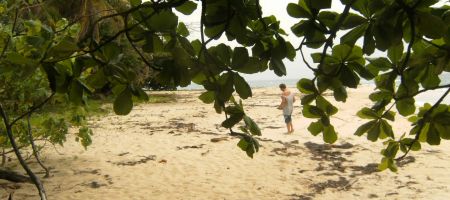
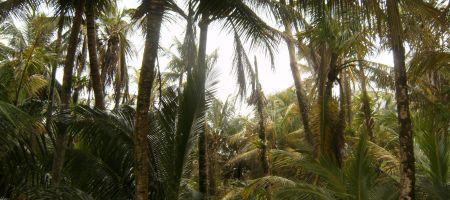
Despite the bad weather, we went to an isleta that was about 30min boat ride away from the main island. The beaches on these protected islands are the most beautiful beaches I have ever seen :-)
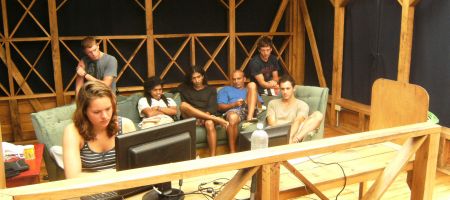
It was raining the whole day, so some travellers got together to watch some movies on the sheltered patio.

Intendando a olvidar
y dirigir
In Panama I was travelling alone again. Besides of that, Montezuma’s revenge messed me up. Luckily enough, the medicine I bought at a pharmacy took effect already after a few hours.
Here are some impressions from Boquete, a mountain village near David:

Viajando a Panamá
con el autobus
“Tracopa” doesn’t come from “traer una copa” (bringing a cup) but from “Transportes Costaricensis Panamenos LTDA” and is the name of the bus company in which I wrote this story into my notebook (yes, it´s a book!). As you can probably derive from the name, I was on my way to Panamá to meet up with Senana.
My travel started in Montezuma at 6 o’clock in the morning in a minibus. After a few hours on only partly paved roads and changing the bus, we took the ferry to Puntaarenas.
From Puntaarenas, the bus went on to San José. My original plan was to catch the bus to the border in San José at 1 o´clock but well, that didn’t work. Not really because the bus was late – the busses here are surprisingly punctual (so far), sometimes they even leave earlier than scheduled – but because the whole bus station was gone! You must know that the busses here are all run by individual companies and most of them have their own bus stations, leading to that the stations to the different cities are scattered all over town. Or well, actually most of the bus stations are somewhere around the Coca-Cola bus stand so after all, San Jose doesn’t have a bus station bus a bus station district.
As the taxi driver who drove me to the new bus station explained, Tracopa’s bus station was moved two years ago to Calle 5, Avenida 20. This is about 15 minutes away from the Coca Cola bus stand by taxi.
So yeah, I missed the bus to Paso Canoas (border crossing to Panamá) by 15 minutes and instead went on the bus to Palmar, a city that is halfway to the border so that I can get to Panamá early the next morning. The Interamericana to Palmar leads through the mountains where the temperature suddenly dropped below 20ºC only to change into a suffocating heat once we were out of the mountains.
Palmar is also called the “heart of the South” by my travel guide, which is absolutely true temperature-wise. Fortunately it began to rain heavy that night so it was halfway possible to sleep a bit in the dosshouse (by Western standards) I stayed that night.
From Palmar, I went to Ciudad Neily and from there to the border in “local” busses. The funny thing is that they really stop for everyone. I mean, not just at the bus stops. People who got their house or whatever directly at the Interamericana will just be picked up and dropped directly in front of their house. This goes so far that some people will just take the bus to get a short lift for a few blocks. And these were busses which drove from city to city, not local busses :-). Reminds me of India.
There is always a second person on the bus apart from the driver who remembers exactly where you got on the bus and where you want to get off, sees to that you are dropped at that point and collects the appropriate amount of money from you before you get off. Man, I like that … I already see myself trying to jump out of the local bus right in front of my house when I am back in Germany :-).
The procedure to cross the border to Panamá was… more disorganized and complicated then I expected. To make is short, I spent about two hours to run from A to B and back to A and actually back to B again (I omitted the C, actually) plus well, waiting in lines. And on each way I was asked by taxi drivers where I want to go, grr. Below impressions of half the way from A to B ;-).

Pedro el buceador
…y el pescador a la playa
On the 28th I went to Montezuma. This lovely little tourist village stretches along several long beaches along the pacific coast . It is a very popular location for backpackers and other travellers who try to escape the “tourist beaches”. Of course, this doesn´t make this beach less touristy, but in a more pleasant way.
And apparently, also local people live there ;-): For example Pedro, the diver/hunter. On sunrise of my first morning in Montezuma, me and a Swiss girl, Miriam went to a nearby waterfall to take a good bath after the hot and humid night before. A little bit later, a local with a harpoon, a plastic bag and diving goggles came to the waterfall. We talked a bit and it turned out that he is hunting for freshwater shrimps in this stream. He showed me some shrimps that he already caught further down and explained that actually it is currently not the season for freshwater shrimps, so the chance to catch one in the pond around the waterfall (which he said is 12(!) meters deep) is not big; during the season, he said, the shrimps can even reach the length of a forearm and there would be so many that he can fill his bag of hunted shrimps (the size of a forearm).
Pedro shows that the pond around the waterfall really is deeper than expected ;-)
The other encounter I had at the same day was with a fisherman who was fishing at the beach right next to my hostel. I was just swimming near him (he stood in the water until his breast) when something big bit on the bait. And it was really big (he yelled something like “whoa, es un monstruo!”), so big that he could actually not hold ground was dragged further into the water until the water reached to his neck. I helped him to gain a few feet out of the water and when he reached the beach and thus had proper ground under his feet, he walked away from the water, pulled the string in while walking to the water, walked away from the water etc… to pull the fish in. At that point, he already got the attention of the whole beach. When the fish he caught finally came to surface onto the beach after five minutes or so of pulling in, the whole beach applauded and local and travellers alike rushed to the fisherman to have a look at and photograph the catch and congratulate the fisherman. I got the following pictures from a Chinese couple that is currently travelling the world, thank you Liu!
According to some locals I asked, the fish is a “Gallo” (Spanish for rooster) because it has also a comb on it´s head like the rooster.
Comment [1]

Monte Verde
Yeah, much is happening during currently during my travel so I got a bit behind the writing. After San Jose, my next station was Santa Elena, a village in the mountains surrounded by several National Parks. Even though it is currently (almost the end of) the dry season, this valley somehow magically kept it´s green color.
The beauty of a rain forest, or in this case a cloud forest (a forest that is in the clouds and thus has a humidity of about 100%) is really stunning. The vivid green colors, the moss that grows all over the place and also on trees, the many vines and flowerlike plants hanging from the trees are really something special. The bright daylight that shines through at some spots and creates such big contrasts that it is really hard to capture this beauty with a camera.
And finally, here is a little riddle: What is this? (I don´t mean the guy)
Comment [4]

Los primeros impresiones
Here are some photos from San Jose, the capital of Costa Rica and the city where I arrived.
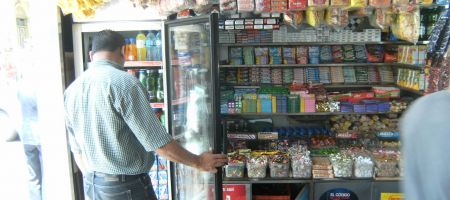
Street-seller (like a German “Kiosk”, only directly on the sidewalk and “open”) in the central avenue.
It’s odd. I thought that after India and Marruecos, I’ll immediately find my way around Costa Rica. Especially because I heard (and it is true), that CR is more of a vacation-country and also relatively rich as opposed to other central american countries. So I was suprised to see myself being afraid to go out alone of the hostel in the dark on my first day and even through the area near the bus station. The scenery changes really fast in San Jose. I also first missed out a lot of things and probably still am. I noticed the hookers near the hostel, the NATO-barbwire on almost each balcony, the a little bit broken streets and that distinctive smell in the poorer part of the town (near the bus stations) but for example not that right on the other side of the road from the hostel, there was a college.
But of course, the deal about less developed countries (or, say: less westernized countries) is I guess that they are pretty different from Europe/North America but each in a distinct way. So, one needs to get used to the culture, rules and society anew. And a little more caution at the start of the travel can not be wrong.
Comment [1]

Muro del Don Quixote
This is for my brother. On the first day in San Jose, I walked by a wall of an old house near parque Morazan. On this wall, there were several paintings on tiles, showing scenes from the Don Quixote novel. I tried my best to translate the captions beneath the paintings :-)
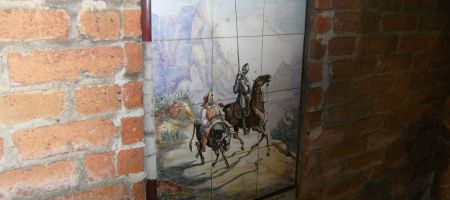
Can’t translate the caption. It’s something like… They marched on so [far] that at dawn, they thought with the security of a bird that they would not find them even though they were were searching for them.
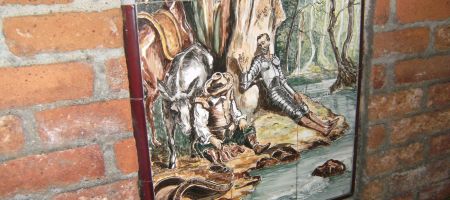
Caption: Eat, Sancho my friend, hold to your life and leave me dying on myself at the hands of my thoughts and the strength of my misery
Comment [1]

